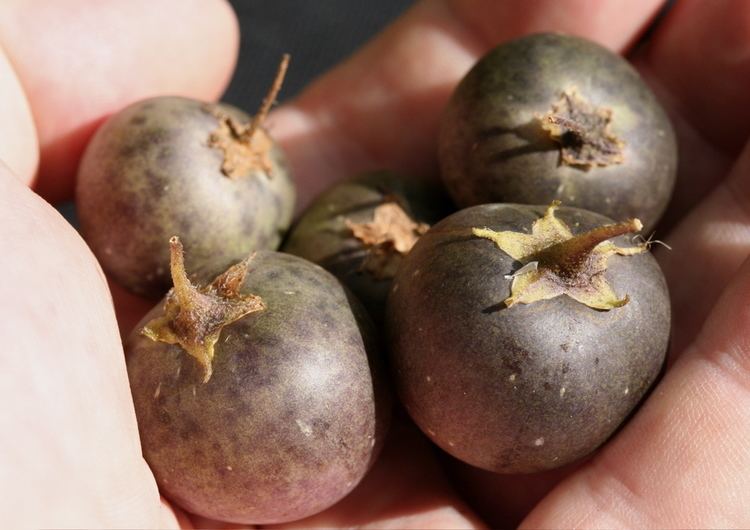 | ||
The potato fruit is the part of the potato plant that after flowering, produces a poisonous green cherry tomato-like fruit.
Characteristics
After flowering, potato plants produce small green fruits that resemble green cherry tomatoes, each containing about 300 seeds. Like all parts of the plant except the tubers, the fruit contain the toxic alkaloid solanine and are therefore unsuitable for consumption. All new potato varieties are grown from seeds, also called "true potato seed", "TPS" or "botanical seed" to distinguish it from seed tubers. New varieties grown from seed can be propagated vegetatively by planting tubers, pieces of tubers cut to include at least one or two eyes, or cuttings, a practice used in greenhouses for the production of healthy seed tubers. Plants propagated from tubers are clones of the parent, whereas those propagated from seed produce a range of different varieties.
The flowering of potato plants was historically linked to the Irish potato famine of the 1840s, otherwise known as "late blight", according to research at the Michigan State University. In 2014, many farmers were alarmed when they found the green fruit on what is not normally produced on the potato plant. The fruits are produced when temperatures are below normal. The fruits have no value to gardeners as the fruits are inedible as they are filled with solanine, which causes severe illnesses.
